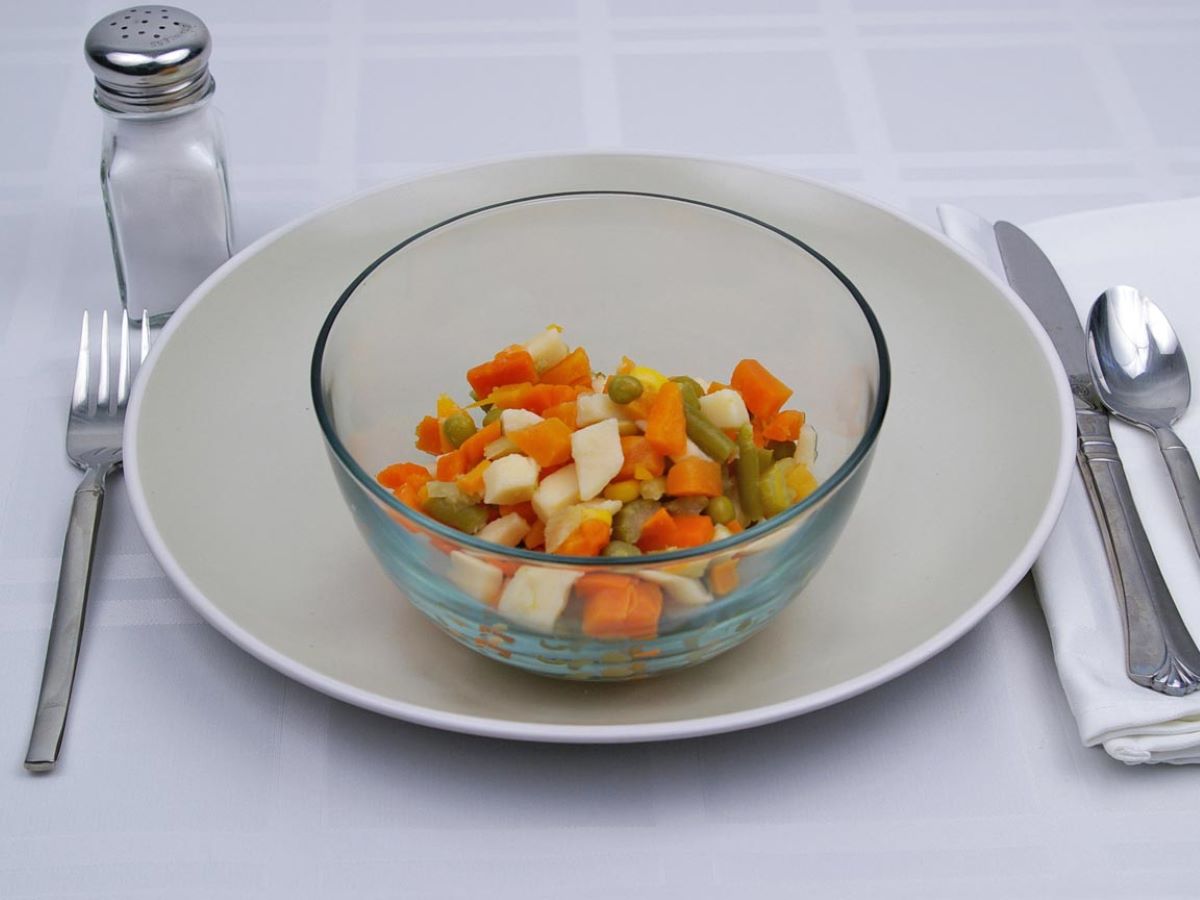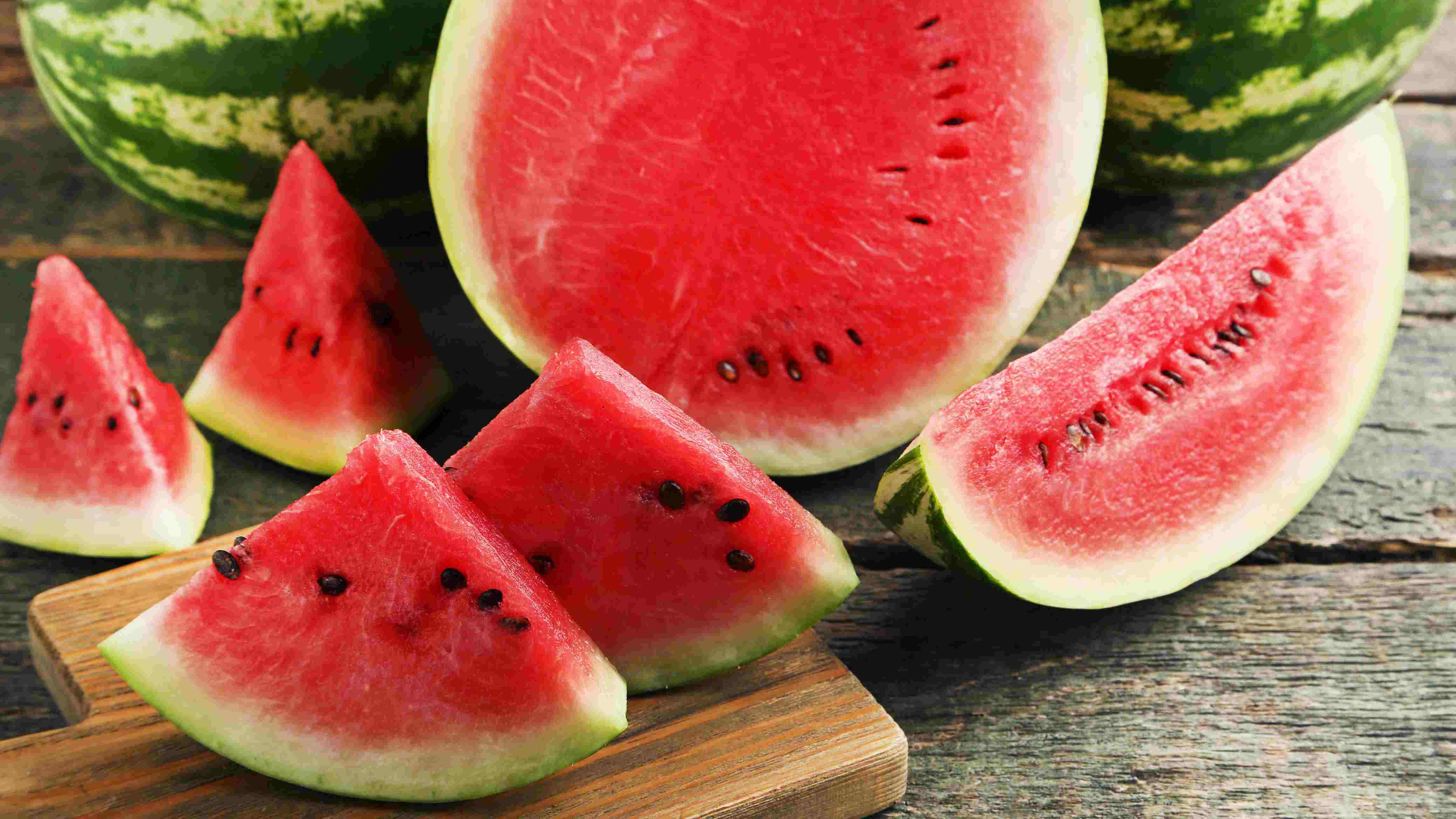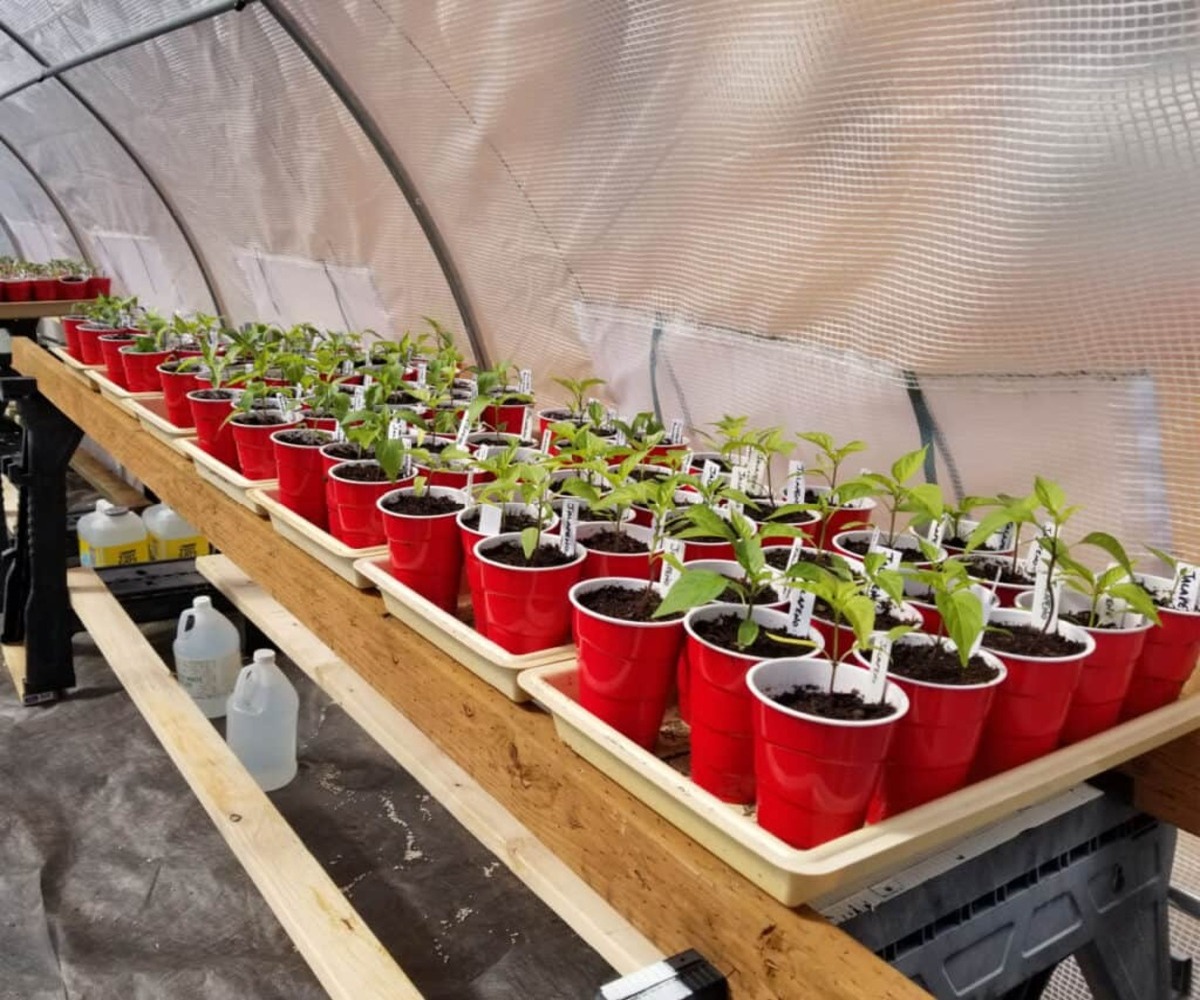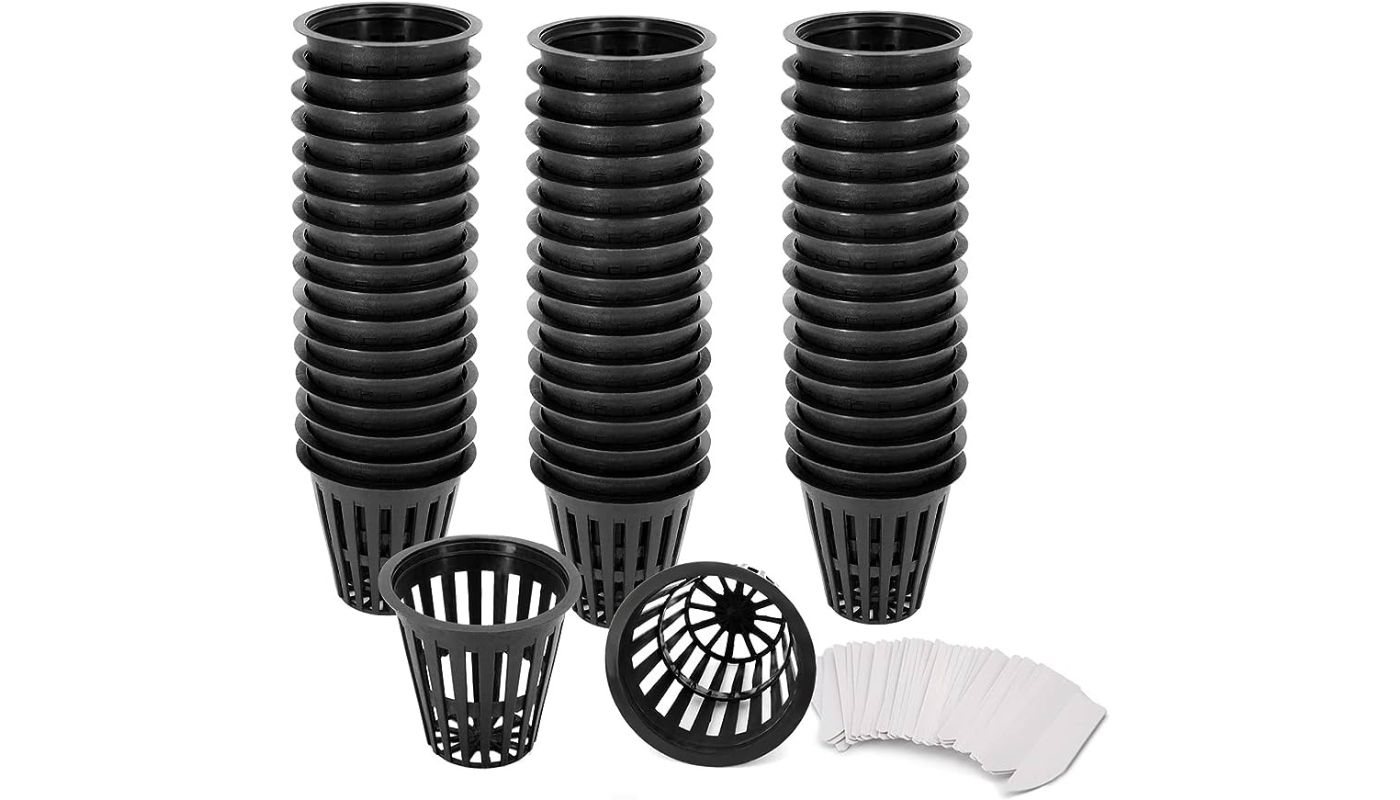Home>Gardening News and Trends>Latest News>How Many Calories Are In A Cup Of Vegetables


Latest News
How Many Calories Are In A Cup Of Vegetables
Modified: January 22, 2024
Discover the latest news on how many calories are in a cup of vegetables. Get the facts and make informed dietary choices.
(Many of the links in this article redirect to a specific reviewed product. Your purchase of these products through affiliate links helps to generate commission for Chicagolandgardening.com, at no extra cost. Learn more)
Table of Contents
Introduction
Welcome to our comprehensive guide on the caloric content of vegetables. Have you ever wondered how many calories are in a cup of vegetables? Well, you’re in the right place! Whether you’re on a weight loss journey, trying to maintain a healthy lifestyle, or simply curious about the nutritional value of the foods you eat, understanding the caloric content of vegetables can be a valuable tool.
Vegetables are an essential part of a balanced diet, providing essential nutrients, vitamins, and minerals. They are also generally low in calories, making them a great choice for those watching their calorie intake. However, not all vegetables are created equal when it comes to calories. The caloric content can vary depending on the type of vegetable, its preparation method, and serving size.
In this guide, we will explore the caloric content of common vegetables and provide tips on how to measure calories in vegetables. We will also discuss factors that can affect the caloric content of vegetables, such as cooking methods and storage. By the end of this guide, you will have a better understanding of how many calories are in a cup of vegetables, and you’ll be armed with the knowledge to make informed decisions about your daily calorie intake.
Before we dive into the specifics, it’s important to note that while calories are an important aspect of maintaining a healthy weight, they are not the sole determinant of a food’s nutritional value. Vegetables are packed with vitamins, minerals, and fiber, which are crucial for overall health and well-being. So, while calories are important, it’s equally important to focus on the overall nutritional quality of the foods we consume.
Now that we’ve covered the basics, let’s delve into the fascinating world of the caloric content of vegetables. Get ready to discover the surprising range of calories in your favorite veggies and learn how to incorporate them into your daily diet for optimal health!
Overview of Calories in Vegetables
Vegetables are incredibly versatile and can be enjoyed in numerous ways – raw, cooked, steamed, roasted, or even blended into smoothies. They not only add vibrant colors and flavors to our meals, but they also provide essential nutrients while being low in calories. This makes them an excellent choice for those looking to maintain or lose weight.
When it comes to the caloric content of vegetables, it’s important to remember that not all vegetables are equal. Some vegetables are naturally higher in calories than others. For example, starchy vegetables like potatoes and corn tend to have a higher caloric content compared to leafy greens such as spinach or lettuce. This difference in caloric content can be attributed to variations in macronutrient composition.
In general, vegetables are low in calories because they have a high water content and are rich in fiber. These factors contribute to a feeling of fullness and satiety, making them an excellent choice for healthy snacking or as a side dish to accompany other meals.
While most vegetables are low in calories, it’s important to note that the preparation method can significantly impact their caloric content. For example, frying vegetables in oil or adding heavy dressings can significantly increase the calorie count. On the other hand, choosing to steam, grill, or bake vegetables can help preserve their nutritional value while keeping the calorie count low.
It’s also important to consider the serving size when assessing the caloric content of vegetables. The caloric values provided for vegetables are typically based on a standard serving size of 1 cup, but it’s crucial to remember that individual portion sizes may vary. Monitoring portion sizes and practicing portion control are essential for managing calorie intake.
In summary, vegetables are a vital part of a healthy diet. They are low in calories, high in nutrients, and can be enjoyed in various delicious ways. By understanding the caloric content of vegetables and making mindful choices about preparation methods and portion sizes, you can enjoy the benefits of vegetables while managing your calorie intake.
Caloric Content of Common Vegetables
When it comes to the caloric content of vegetables, there is a wide range of variation. Let’s take a closer look at the caloric content of some common vegetables:
- Leafy Greens: Leafy greens like spinach, kale, and lettuce are incredibly low in calories. One cup of raw spinach contains only about 7 calories, while a cup of raw kale has approximately 33 calories. These vegetables are not only low in calories but also packed with essential vitamins and minerals.
- Cruciferous Vegetables: Vegetables from the cruciferous family, such as broccoli, cauliflower, and Brussels sprouts, are excellent choices in terms of both nutrition and caloric content. A cup of cooked broccoli contains around 55 calories, while a cup of cauliflower has approximately 25 calories. These vegetables are also abundant in fiber and vitamins.
- Root Vegetables: Root vegetables like carrots, beets, and sweet potatoes are slightly higher in calories due to their natural starch and sugar content. A cup of cooked carrots has about 54 calories, a cup of boiled beets contains around 75 calories, and a cup of baked sweet potato has approximately 180 calories. However, they are still nutritious additions to your diet.
- Tomatoes and Peppers: Tomatoes and peppers are technically fruits but are commonly considered vegetables in a culinary context. These vegetables have a relatively low caloric content. A medium-sized tomato has about 22 calories, while a medium-sized bell pepper contains around 30 calories. They are rich in antioxidants and provide a burst of flavor to dishes.
- Legumes: Legumes like chickpeas, black beans, and lentils are not only a great source of plant-based protein and fiber but also have a moderate caloric content. A cup of cooked chickpeas contains approximately 269 calories, while a cup of cooked black beans has around 227 calories. These vegetables are versatile and can be used in various cuisines.
These are just a few examples of common vegetables and their caloric content. It is essential to note that these values can vary depending on factors like cooking methods and portion sizes. Always refer to reliable sources or consult a nutritionist for the most accurate information on specific vegetables.
Now that you’re aware of the caloric content of common vegetables, you can make informed choices when planning your meals and snacks. Incorporating a variety of vegetables into your diet not only provides essential nutrients but also helps you keep your calorie intake in check.
How to Measure Calories in Vegetables
Accurately measuring the caloric content of vegetables can be challenging, as it involves considerations such as cooking methods, portion sizes, and variations in nutrient composition. However, there are a few general guidelines that can help you estimate the calorie content of the vegetables you consume:
- Reference Guides: Utilize reputable sources such as nutrition databases, food labels, or mobile apps that provide comprehensive nutritional information. These references can give you an idea of the average caloric content of different vegetables and their serving sizes.
- Raw vs. Cooked: It’s important to note that the caloric content of vegetables can change during the cooking process. Some vegetables may lose water content and shrink in size, which can affect the calorie count. To get a more accurate estimate, consider measuring the vegetables both raw and cooked and adjust the portion sizes accordingly.
- Weight or Volume: Measuring vegetables by weight using a kitchen scale is the most accurate method. However, if you don’t have access to a scale, you can rely on volume measurements using measuring cups. Just be mindful of the fact that different vegetables can vary in density, so the calorie count may not be exactly precise.
- Preparation Methods: Pay attention to the cooking methods and ingredients used when preparing vegetables. Frying, adding oils, or high-fat dressings can significantly increase the caloric content. Opt for steaming, grilling, baking, or consuming vegetables raw to keep the calorie count lower.
- Consider the Whole Meal: Keep in mind that the caloric content of a vegetable dish may be influenced by other ingredients or the method of preparation, such as sauces, seasonings, or added fats. If you’re following a specific calorie target, make sure to account for all components of your meal to get an accurate total calorie count.
While these methods can provide a rough estimation of the caloric content of vegetables, it’s important to remember that individual variations, such as the specific type of vegetable, cooking time, and personal preferences, can affect the actual values. Consulting with a registered dietitian or nutritionist can offer personalized guidance and help you track your calorie intake more accurately.
By being mindful of portion sizes, cooking methods, and utilizing reliable resources, you can make educated estimates of the caloric content of the vegetables you consume. Monitoring your calorie intake can help you maintain a healthy and balanced diet.
Factors Affecting Caloric Content of Vegetables
While vegetables are generally low in calories, several factors can influence their caloric content. Understanding these factors is essential when evaluating the nutritional value of vegetables:
- Variety and Type of Vegetable: Each vegetable has its own unique macronutrient composition, which can affect its caloric content. Starchy vegetables like potatoes and corn tend to have higher calorie counts due to their higher carbohydrate content, while leafy greens and non-starchy vegetables are typically lower in calories.
- Cooking Methods: The way vegetables are cooked can impact their caloric content. For instance, frying or deep-frying vegetables can significantly increase their calorie count due to the added oil. On the other hand, steaming, grilling, or baking vegetables can help retain their natural flavors while keeping the calorie count lower.
- Additions and Seasonings: The additional ingredients and seasonings used when preparing vegetables can affect their caloric value. For example, adding butter, sauces, or dressings can increase the calorie content. Opting for healthier alternatives like herbs, spices, lemon juice, or vinegar can add flavor without significantly adding to the calorie count.
- Ripeness and Freshness: The ripeness and freshness of vegetables can impact their nutrient content, including calories. In general, fresher vegetables tend to have a higher nutrient density. However, the calorie content may remain relatively stable unless the vegetable is significantly overripe or spoiled.
- Serving Size: The portion size of vegetables consumed plays a crucial role in determining the calorie count. While vegetables are generally low in calories, consuming them in excessive quantities can still contribute to overall calorie intake. It’s important to be mindful of portion sizes and practice moderation when enjoying vegetables.
It’s important to note that while the caloric content of vegetables is influenced by these factors, they are still an essential part of a healthy diet. Vegetables provide vital nutrients, fiber, and antioxidants that contribute to overall well-being. Instead of solely focusing on calorie counting, it is more beneficial to prioritize the overall nutritional value and variety of the vegetables consumed.
By understanding the factors that can affect the caloric content of vegetables, you can make informed decisions about your meal preparation and optimize the nutritional value of your vegetable dishes.
Conclusion
In conclusion, understanding the caloric content of vegetables is essential for maintaining a balanced and nutritious diet. While vegetables are generally low in calories, their specific caloric content can vary depending on factors such as the type of vegetable, cooking methods, and portion sizes. Incorporating a variety of vegetables into your meals not only provides essential nutrients, vitamins, and minerals but also helps keep your overall calorie intake in check.
Leafy greens like spinach and kale, cruciferous vegetables like broccoli and cauliflower, and non-starchy vegetables like tomatoes and peppers are excellent choices due to their low-calorie counts. However, it’s important to consider the cooking methods used, as frying or adding high-fat dressings can significantly increase the caloric content. Opting for healthier preparation methods such as steaming, grilling, or baking can help retain the nutritional value while keeping the calorie count lower.
Measuring the caloric content of vegetables can be done through various methods, including referencing nutrition databases, using measuring cups, or weighing with a kitchen scale. It’s also important to be mindful of the ingredients, sauces, or seasonings added to vegetables, as they can contribute to extra calories. Additionally, considering the overall serving size and being aware of portion control are crucial for managing calorie intake.
Lastly, it’s important to remember that while calories are an important aspect of maintaining a healthy weight, they should not be the sole focus when evaluating the nutritional value of vegetables. Vegetables provide numerous health benefits beyond just their calorie content, including fiber, vitamins, minerals, and antioxidants. Aim to incorporate a variety of vegetables into your diet to enjoy the full spectrum of their nutritional benefits.
By understanding the caloric content of vegetables and implementing mindful choices in their preparation and portion sizes, you can maintain a healthy and well-rounded diet. So, embrace the wonderful world of vegetables and savor the flavors while nourishing your body with their goodness!










